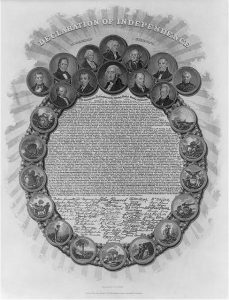Google Web Stories is a tool that offers brands a way to engage their public in an immersive, personalized, and interactive way with the magic of the stories format.
When Web Stories was introduced in 2018, people also referred to it as AMP Stories, since it uses AMP (Accelerated Mobile Pages, a framework to optimize mobile web browsing) as its base technology. But we saw that AMP was fading away due to some Google decisions. It was no longer necessary to have AMP to get better site performance and better rankings in search results.
Many website creators and publishers thought that AMP was a way for Google to further monopolize the internet, thereat, Google created its own product without binding it to other tools as AMP does.
Now, Google is trying to make more people use Web Stories and this is drawing some comparisons to AMP, which received a similar push in its early years. As Web Stories are a trending content format (similar to Instagram Stories and TikTok) Google can benefit from more people using it, as it can attract younger audiences.
The question is: “Is Google Web Stories taking the place of AMP?” Maybe. However, there’s a difference between Web Stories and AMP: while the first one is actually an HTML (the standard markup language for documents designed to be displayed in a web browser) page on its own, AMP pages are paired with an equivalent web page.
So, despite being built using the AMP framework, Web Stories are different. But how?
Let’s compare
The objective of AMP Stories, introduced in 2018, is described as a “Visual storytelling for the open web” with an immersive and performative experience for the readers. Also, it’s free to use and available for everyone, can be implemented on AMP and non-AMP pages (seems to have a focus on mobile platforms), and supports multiple media formats like videos, gifs, audios, and animations.
Going through the guide “Create your first web story”, the first thing that you can see is that either you’ll need a developer or the knowledge needed to implement it. The advertising options seem very customizable and easy to implement on a third-party platform with an ad server like Google Ad Manager.
Now, looking at Google Web Stories, the objective of this new solution seems to be pretty much the same, but emphasizes the ownership of the stories. It allows complete control of the story format with the capability of customizing to mobile and web platforms.
The solution also makes it possible for pages to be found on some Google platforms like the Search and Discover stories carousel (currently available in the US, India, and Brazil). They have basically the same implementation as AMP for advertising, and also give a lot of emphasis towards better monetization.
Last but certainly not least, you have a visual editor creator as I mentioned before. It means that you don’t need to code anything to create your story (+10 points for Gryffindor!).
Google’s Search Advocate John Mueller responded to one such question on Twitter from an SEO professional asking if Web Stories is the new AMP.
He said: “Kinda – they’re built on top of the AMP framework, they just don’t use the “paired” setup. If you use a tool to generate them, they’re essentially just HTML pages that you can link to from within your site naturally.”. But what does it mean? It means that your story is pure HTML, you don’t have any dependencies (the AMP framework) in your created story.
So, is Web Stories the new AMP?
Well, yes. AMP Stories is not a bad solution. Quite the opposite. It offers you a lot of tools to create your stories, monetize and integrate with your website and other tools. But Google Web Stories offers you all these things and some others that can enhance your visibility and no-code, as I said before.
Plus, it probably will be easier to implement other Google tools into it (Analytics for example) since it’s from the same provider.
If you are using the AMP Stories and are in doubt about replacing them with Google Web Stories, I recommend you analyze the pros and cons of your exchange (maybe the effort is not worth it yet). But if you are starting out and seeking for the best tool, I think it’s pretty clear, right?
If you enjoyed this content, consider subscribing to our newsletter to receive great articles like this directly in your inbox!







